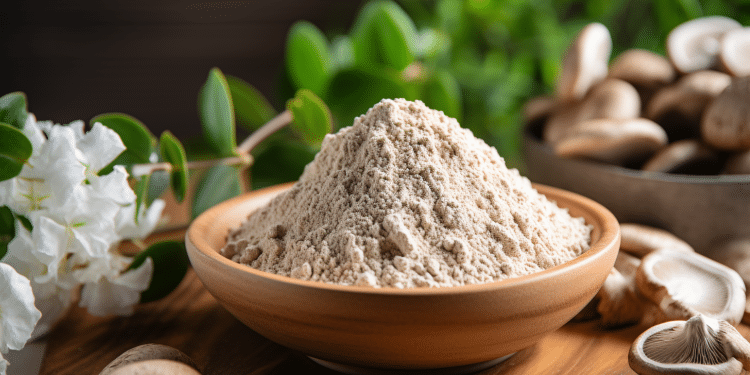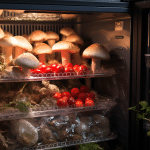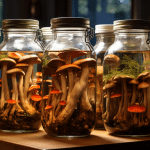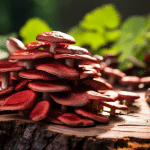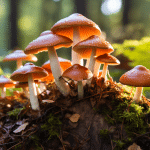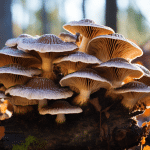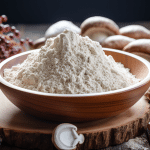Adding a superfood, mushrooms, into your routine can help you reach your health and wellness goals. However, it is important to know about the different options out there when shopping for functional mushroom products when it comes to mushroom extract vs powder. This requires an understanding of a few key terms. While fungus powders and mushroom extracts might seem like different products, they are, but not for the reasons you might think.
Mushroom Tinctures/Extracts Vs Powder
Differences in The Way They Are Made
Tinctures and extracts both involve extraction, a process of moving the properties of a mushroom into a liquid. Typically, tinctures are extracted into a drinkable alcohol, and extracts are steeped into water.
However, these terms are used interchangeably in certain circumstances. Generally, a powder is created from the crushing or grinding of dried mushrooms. The confusion occurs because some extracts are then dried out and turned to powder. Determining if you want to buy the full-fat mushroom powder or extract powder is important in making sure that you are getting the product that you want, and the product that will help you achieve your health goals.
While the two can begin from similar starting materials, differences between the powdered and whole mushrooms start with how mushrooms are processed. Whole mushroom powders include harvesting both the fruiting body, a reproductive structure, and its mycelium, a vegetative stage in a mushrooms lifecycle.
Once harvested, these components are heated to dehydrate them entirely. The dried mushrooms are then pounded or ground to a fine powder. This powder may contain both the fruiting bodies and mycelium, as well as mycelial growth media, which has been digested and becomes one with the mycelium.
Learn more: Mushroom coffee benefits
Depending on brand and species, all or most of these components from a whole mushroom can be included in the final product to enhance the benefits of the mushroom powder. Mushroom extracts may also contain nutrients from fruit bodies and mycelium. After harvesting, desired species are dried, milled, and placed into solvent.
Hot water is used if the extraction is of water-soluble compounds; alcohol is used if the extraction is of alcohol-soluble compounds. After steeping for some time in the liquid solvent, mushrooms can be removed, leaving solvents behind. This process can be repeated multiple times, with the same mushrooms being extracted into both water and alcohol. After that, the mushroom solids are discarded. If alcohol is used, let it evaporate.
The liquid that contains the extracted compounds is cooked to reduce it to its standardized concentration. The extract can either be sold as that liquid or it can be further processed. In some cases, the liquid extract, which contains compounds from mushrooms, can be sprayed with a fine mist and dried to produce a powder.
Although originally extracted as a liquid, the end product is now a powder. Often, though, that extracted powder will not contain all or most of the mushrooms components, as solids were discarded at an earlier stage in the process. It will only contain the extracted components.
Different Products Have Different Benefits
While they can have a similar consistency after processing, the difference between the powdered whole mushrooms and powdered extracts is mostly in their benefits.
Organic Mushroom Powders Contain:
- Macronutrients: protein and complex carbohydrates
- Micronutrients: B vitamins and minerals like selenium, copper, iron, and potassium
- Antioxidants such as ergothioneine, glutathione, polyphenols, and superoxide dismutase
- Prebiotic fiber to support the immune system by contributing to a beneficial gut flora
- Beta-glucans, alpha-glucans, and other polysaccharides that support the immune system
Some species contain various bioactive compounds within the fruit bodies and the mycelium. A full-mould powder, which includes both components of a mushrooms lifecycle, would offer all the benefits of those compounds.
While extract powders can contain certain active compounds such as beta-glucan at higher concentrations, the benefits of others are usually lost. The end contents will also vary depending on if an extract is made from the fruit flesh, the mycelium, or both.
Learn more: Mushroom fruiting chamber
Both are Great for Your Wellness Goals
The choice among the various products of fungi powder comes down to personal preference and wellness goals. Advocates of powdered extracts claim that, because of the greater amount of processing, their products are more bioavailable. Enthusiasts of whole-mushroom powders feel their powders offer a wider array of benefits compared to extracts alone.
When steeped in warm water, about 160 degrees fahrenheit , compounds found in whole mushroom powders can have increased bioavailability. For this reason, many whole mushroom powder users prefer to dissolve their powders in warm liquids such as tea, coffee, cocoa, or broth.
If you are looking for a standardized dose of beta-glucans to support your immune system, extract powders can be enough to achieve your goals. If you would rather eat whole mushrooms, including prebiotic fiber-containing solids, an entire mushroom powder would deliver these benefits, as well as all of the nutrients and bioactive compounds.
While some mushroom experts favor just the fruiting bodies, others swear by the mycelium for power. Regardless, belief is held in the value of both.
In either case, it is crucial that you carefully read labels before purchasing functional mushroom products. This practice will give you insight into what components of the mushrooms life cycle it contains, and also provide some clues into what kind of processing has gone on with the mushrooms. It will also inform you about the third-party testing and QA accreditations that the product has undergone.
Understanding how the powdered mushrooms are processed, and what is contained in the end product, will help you to obtain maximum value and the best results for the mushrooms products that you buy.
